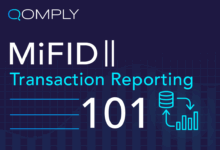Blockchain-Based Trade Settlement System For Institutional Investors Reducing Counterparty Risk
Delving into blockchain-based trade settlement system for institutional investors reducing counterparty risk, this introduction immerses readers in a unique and compelling narrative. Blockchain technology is revolutionizing trade settlement systems by offering increased security and transparency while reducing counterparty risk for institutional investors. This discussion will explore the benefits, implementation strategies, and the role of smart contracts in enhancing trade settlement efficiency within this innovative framework.
Introduction to Blockchain-Based Trade Settlement System
Blockchain technology has revolutionized the way trade settlement systems operate by providing a decentralized and secure platform for transactions. By utilizing a distributed ledger, blockchain ensures transparency, immutability, and efficiency in settling trades between parties.
Reducing Counterparty Risk
Blockchain reduces counterparty risk in trade transactions by eliminating the need for intermediaries and central authorities. Smart contracts, self-executing contracts with predefined conditions, ensure that trades are settled only when all agreed-upon conditions are met. This automation reduces the risk of default by either party, as the terms of the trade are securely stored on the blockchain and executed without human intervention.
Importance of Institutional Investors
Institutional investors play a crucial role in trade settlement systems due to their large volume of transactions and significant impact on financial markets. Their participation in blockchain-based trade settlement systems brings credibility and liquidity to the market, enhancing efficiency and security. Additionally, institutional investors often have stringent risk management policies, making them ideal candidates for utilizing blockchain technology to reduce counterparty risk in trade transactions.
Benefits of Using Blockchain for Trade Settlement
Blockchain technology offers several key advantages over traditional methods when it comes to trade settlement for institutional investors. Not only does it enhance efficiency, but it also reduces counterparty risk and improves transparency and security in the entire process.
Efficiency in Reducing Counterparty Risk
- Blockchain technology allows for direct peer-to-peer transactions without the need for intermediaries, reducing the number of parties involved in the settlement process.
- Smart contracts can be utilized to automate and enforce the terms of the trade agreement, eliminating the potential for human error or manipulation.
- Real-time updates and reconciliation of transactions on the blockchain ensure that all parties have access to the same information, reducing the risk of disputes and delays.
Enhanced Transparency and Security
- Every transaction on the blockchain is recorded in a transparent and immutable ledger, providing a complete audit trail of all trade activities.
- Blockchain technology utilizes cryptographic algorithms to secure transactions, making it extremely difficult for unauthorized parties to tamper with or alter trade data.
- By decentralizing the trade settlement process, blockchain reduces the risk of fraud, collusion, or data breaches that are commonly associated with centralized systems.
Implementation of Blockchain in Institutional Trade Settlement
Blockchain technology has been increasingly integrated into existing trade settlement systems for institutional investors, revolutionizing the way transactions are conducted. By providing a decentralized and transparent ledger, blockchain offers numerous benefits such as increased security, efficiency, and reduced counterparty risk. Let’s delve into the process of implementing blockchain in institutional trade settlement, successful examples, and potential challenges with solutions.
Integrating Blockchain into Existing Systems
- Integration process involves identifying key areas in the trade settlement process where blockchain can be applied.
- Smart contracts are utilized to automate and streamline the settlement process, eliminating the need for intermediaries.
- Data is securely stored in blocks, ensuring transparency and immutability of transaction records.
Successful Implementations of Blockchain for Institutional Investors
- NASDAQ has successfully implemented blockchain technology for private market trades, reducing settlement time and increasing efficiency.
- Australian Securities Exchange (ASX) has adopted blockchain for its equities clearing and settlement system, enhancing security and reducing costs.
- R3 Corda platform has been used by financial institutions for trade finance, demonstrating the potential of blockchain in streamlining complex transactions.
Potential Challenges and Solutions in Adopting Blockchain
- Regulatory compliance and legal frameworks may pose challenges in implementing blockchain technology.
- Interoperability with existing systems and legacy infrastructure can be a hurdle in seamless integration.
- Solutions include collaboration with regulators to create conducive environments for blockchain adoption and developing interoperable protocols for smooth integration.
Role of Smart Contracts in Enhancing Trade Settlement Efficiency
Smart contracts are self-executing contracts with the terms of the agreement between buyer and seller directly written into code. In the context of trade settlement, smart contracts play a crucial role in automating and streamlining the process.
Automation of Trade Settlement Processes
Smart contracts are programmed to automatically execute transactions once certain predefined conditions are met. This automation eliminates the need for manual intervention in the settlement process, reducing the likelihood of errors and delays. As a result, trade settlement becomes more efficient and secure.
- Smart contracts ensure that transactions are settled in a timely manner, as they eliminate the need for manual processing.
- By automating the settlement process, smart contracts reduce the risk of disputes and discrepancies, leading to smoother trade settlements.
- Automated reconciliation and verification of trade details through smart contracts speeds up the overall settlement process, benefiting all parties involved.
Reduction of Intermediaries and Improved Efficiency
Smart contracts operate on a decentralized blockchain network, removing the need for intermediaries such as clearinghouses or custodians. This direct peer-to-peer interaction between transacting parties enhances efficiency by cutting down on processing time and costs.
- By eliminating intermediaries, smart contracts reduce the complexity of trade settlements and minimize the associated fees.
- The use of smart contracts also increases transparency in the settlement process, as all transaction details are recorded on the blockchain for all parties to access.
- Efficiency is further improved as smart contracts enable real-time tracking and monitoring of trade settlements, providing instant updates to stakeholders.
Real-life Examples of Smart Contract Applications
One notable example of smart contract application in institutional trade settlements is the use of blockchain technology in bond issuances and settlements. By encoding the terms of the bond issuance into a smart contract, parties can automate the issuance, distribution, and settlement of bonds, streamlining the entire process.
Smart contracts have the potential to revolutionize trade settlement processes by increasing efficiency, reducing counterparty risk, and enhancing transparency in institutional transactions.
Outcome Summary
In conclusion, the blockchain-based trade settlement system presents a promising solution for institutional investors looking to mitigate counterparty risk and streamline trade processes. By leveraging blockchain technology and smart contracts, organizations can achieve greater efficiency, security, and transparency in their trade settlements. Embracing these advancements can lead to a more robust and resilient financial ecosystem for institutional investors worldwide.


